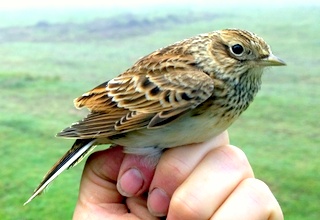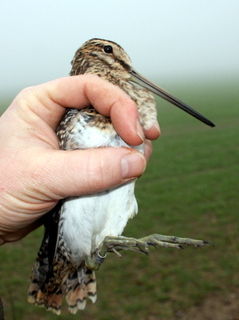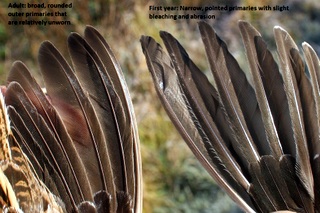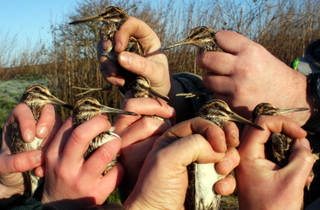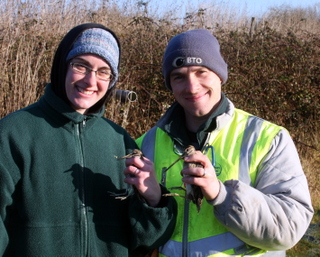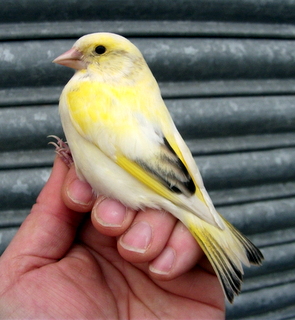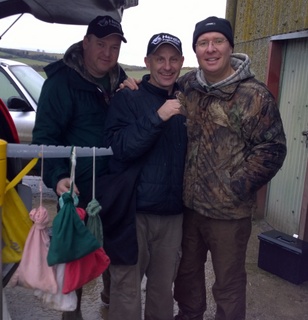27th January 2015 - Pewsey Downs
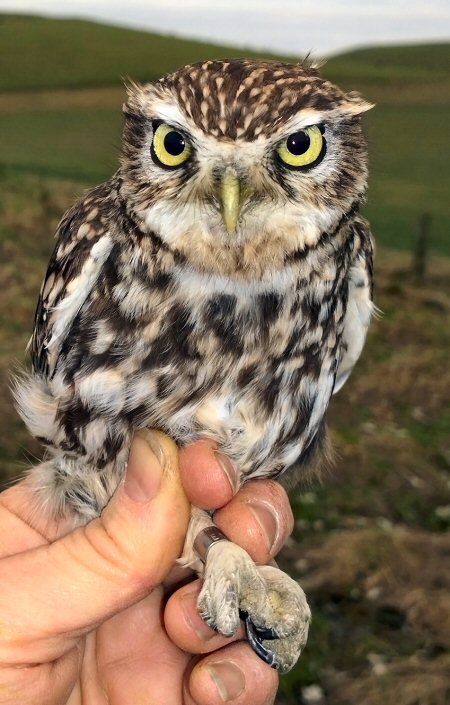
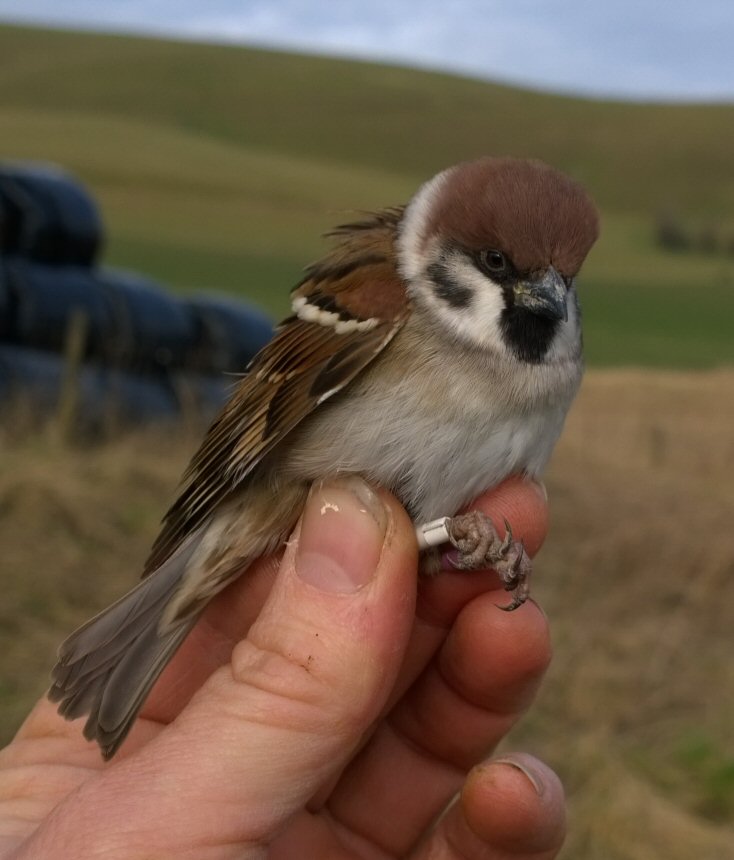
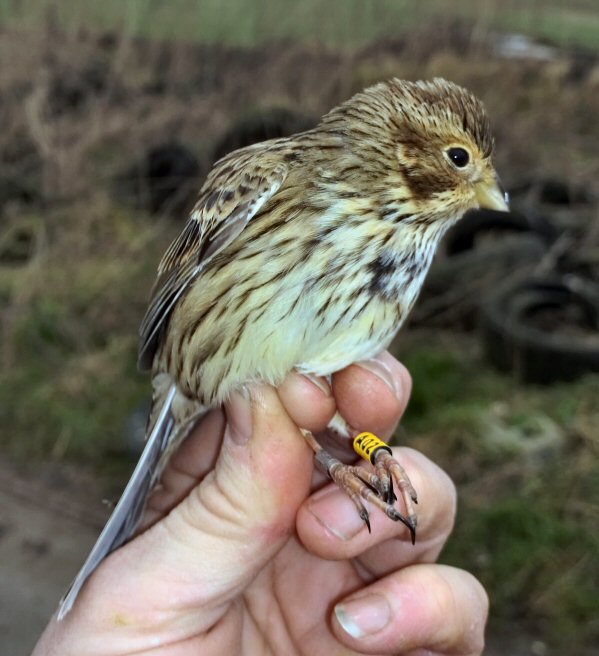
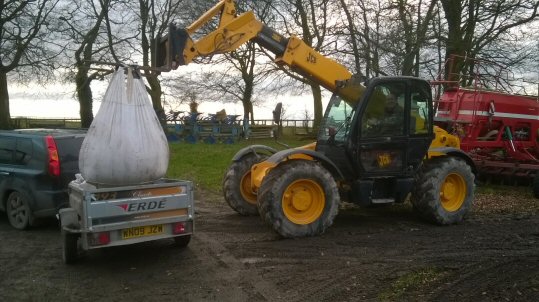




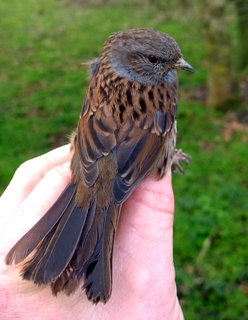
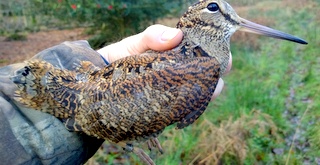
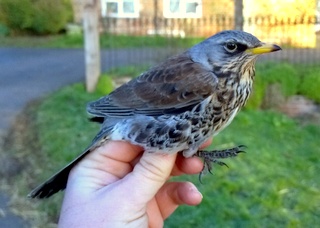

With all the ringing group totals for North Wilts RG now collated we finished 2014 with 24603 captures with 20635 being new birds ringed. Not a bad total for a group with 2 trainers to 2 A's, 2 C's and a couple of trainees.
Highlights of the year were the Wryneck, Barred Warbler and a couple of Quail caught on Salisbury Plain and 3 pulli Cuckoo's all found in the same small reedbed om a stretch of old canal in Swindon.
An amazing breeding season resluted in huge numbers of migrants which were reflected in the number of birds we ringed with 3226 in August and 5463 in September with our 2 sites on Salisbury Plain roducing amazing numbers. Some of the warbler totals were out of this world with 90 Grasshopper Warbler, 951 Whitethroat, 4305 Blackcap and 1812 Chiffchaff. We also managed a creditable 59 Whinchat, 52 Yellow Wagtail, both difficult species to catch in Wiltshire and a massive 667 Redwing largely due to the Latvian lure.
Farmland birds are something the group particularly targets and we managed 718 Yellowhammer ringed while our Wiltshire Tree Sparrow recovery project ringed 1647 birds including1485 pulli for which group members all put in 100's of hours of effort nest monitoring each year.
| Full Grown | Pulli | Retraps | Total | Full Grown | Pulli | Retraps | Total | |||
| Grey Heron | 0 | 4 | 0 | 4 | Fieldfare | 12 | 0 | 0 | 12 | |
| Mute Swan | 1 | 0 | 0 | 1 | Song Thrush | 122 | 3 | 46 | 171 | |
| Eurasian Teal | 12 | 0 | 0 | 12 | Redwing | 667 | 0 | 1 | 668 | |
| Mallard | 4 | 0 | 0 | 4 | Mistle Thrush | 7 | 0 | 0 | 7 | |
| Sparrowhawk | 10 | 0 | 1 | 11 | Cetti's Warbler | 4 | 0 | 2 | 6 | |
| Kestrel | 5 | 7 | 0 | 12 | Grasshopper Warbler | 84 | 6 | 9 | 99 | |
| Grey Partridge | 1 | 0 | 0 | 1 | Sedge Warbler | 474 | 0 | 31 | 505 | |
| Quail | 2 | 0 | 0 | 2 | Reed Warbler | 286 | 101 | 164 | 551 | |
| Water Rail | 5 | 0 | 0 | 5 | Barred Warbler | 1 | 0 | 0 | 1 | |
| Moorhen | 3 | 0 | 0 | 3 | Lesser Whitethroat | 71 | 0 | 11 | 82 | |
| Jack Snipe | 8 | 0 | 0 | 8 | Whitethroat | 948 | 3 | 125 | 1076 | |
| Snipe | 20 | 0 | 1 | 21 | Garden Warbler | 182 | 0 | 62 | 244 | |
| Woodcock | 2 | 0 | 0 | 2 | Blackcap | 4305 | 0 | 282 | 4587 | |
| Green Sandpiper | 3 | 0 | 4 | 7 | Chiffchaff | 1812 | 0 | 116 | 1928 | |
| Common Sandpiper | 1 | 0 | 0 | 1 | Willow Warbler | 442 | 0 | 53 | 495 | |
| Black-headed Gull | 14 | 0 | 1 | 15 | Goldcrest | 305 | 0 | 22 | 327 | |
| Lesser Black-backed Gull | 1 | 0 | 0 | 1 | Firecrest | 1 | 0 | 0 | 1 | |
| Stock Dove | 2 | 12 | 0 | 14 | Spotted Flycatcher | 24 | 0 | 0 | 24 | |
| Woodpigeon | 34 | 0 | 5 | 39 | Long-tailed Tit | 224 | 0 | 121 | 345 | |
| Collared Dove | 7 | 4 | 0 | 11 | Marsh Tit | 17 | 10 | 12 | 39 | |
| Cuckoo | 0 | 3 | 1 | 4 | Willow Tit | 6 | 0 | 0 | 6 | |
| Barn Owl | 9 | 35 | 1 | 45 | Coal Tit | 146 | 21 | 87 | 254 | |
| Little Owl | 3 | 3 | 0 | 6 | Blue Tit | 950 | 175 | 796 | 1921 | |
| Tawny Owl | 1 | 1 | 0 | 2 | Great Tit | 531 | 49 | 413 | 993 | |
| Nightjar | 2 | 0 | 0 | 2 | Nuthatch | 7 | 0 | 12 | 19 | |
| Kingfisher | 9 | 0 | 2 | 11 | Treecreeper | 39 | 0 | 24 | 63 | |
| Wryneck | 1 | 0 | 0 | 1 | Jay | 16 | 0 | 0 | 16 | |
| Green Woodpecker | 12 | 0 | 3 | 15 | Magpie | 21 | 0 | 0 | 21 | |
| Great Spotted Woodpecker | 36 | 0 | 61 | 97 | Jackdaw | 3 | 7 | 1 | 11 | |
| Skylark | 5 | 0 | 0 | 5 | Rook | 1 | 35 | 0 | 36 | |
| Sand Martin | 71 | 0 | 0 | 71 | Carrion Crow | 2 | 0 | 0 | 2 | |
| Swallow | 378 | 185 | 5 | 568 | Starling | 65 | 0 | 0 | 65 | |
| House Martin | 533 | 0 | 5 | 538 | House Sparrow | 108 | 2 | 18 | 128 | |
| Tree Pipit | 28 | 0 | 0 | 28 | Tree Sparrow | 162 | 1485 | 118 | 1765 | |
| Meadow Pipit | 377 | 0 | 3 | 380 | Chaffinch | 776 | 7 | 111 | 894 | |
| Yellow Wagtail | 52 | 0 | 2 | 54 | Brambling | 4 | 0 | 0 | 4 | |
| Grey Wagtail | 34 | 0 | 4 | 38 | Greenfinch | 518 | 0 | 120 | 638 | |
| Pied/White Wagtail | 88 | 14 | 3 | 105 | Goldfinch | 264 | 0 | 147 | 411 | |
| Wren | 365 | 0 | 100 | 465 | Siskin | 1 | 0 | 0 | 1 | |
| Dunnock | 472 | 0 | 252 | 724 | Linnet | 106 | 17 | 2 | 125 | |
| Robin | 502 | 5 | 153 | 660 | Lesser Redpoll | 49 | 0 | 22 | 71 | |
| Nightingale | 4 | 0 | 13 | 17 | Bullfinch | 179 | 0 | 96 | 275 | |
| Redstart | 47 | 0 | 3 | 50 | Yellowhammer | 718 | 0 | 84 | 802 | |
| Whinchat | 59 | 0 | 5 | 64 | Reed Bunting | 219 | 0 | 95 | 314 | |
| Stonechat | 5 | 1 | 0 | 6 | Corn Bunting | 17 | 0 | 1 | 18 | |
| Wheatear | 2 | 0 | 0 | 2 | ||||||
| Blackbird | 315 | 8 | 127 | 450 | Total: | 18441 | 2203 | 3959 | 24603 |
